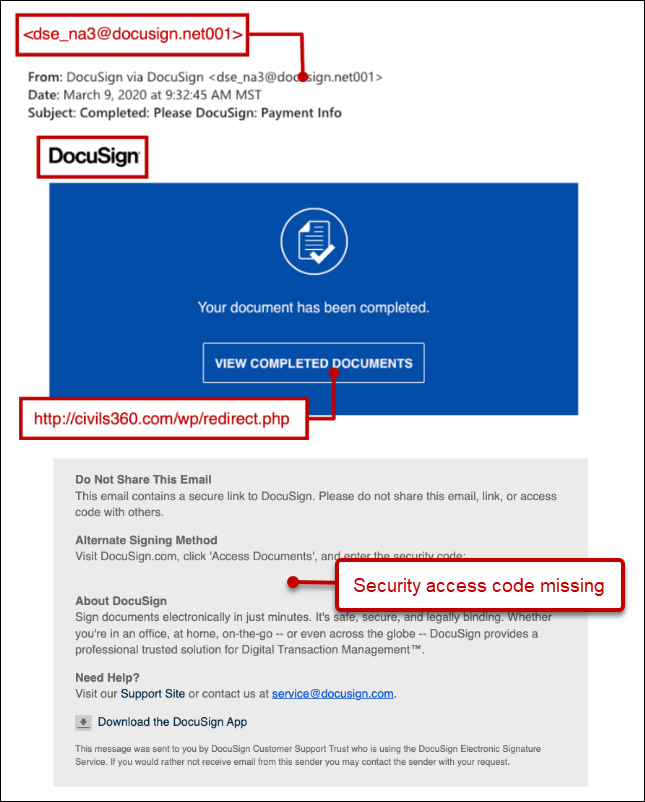Smishing attacks (SMS phishing) are becoming increasingly sophisticated and difficult to spot. This article showcases real-world examples of smishing attempts to help you recognize and avoid these dangerous scams.
Important Safety Note
For security reasons, we've modified all links in these examples to make them non-functional (using "hxxp" instead of "http"). Never click on suspicious links in text messages, even if they appear similar to ones from legitimate organizations you do business with.
1. Bank Account Alert Smishing
ALERT: Your [Bank Name] account has been temporarily limited due to suspicious activity. Verify your identity: hxxps://bank-secure-verify.co/login
Red Flags:
- Urgency and fear tactics - Creating alarm about account limitations
- Suspicious domain - Using "bank-secure-verify.co" instead of the bank's official domain
- Lack of personalization - No account details or customer name
- Request for immediate action - Pressuring you to click immediately
What a Legitimate Message Would Include:
- Your name or partial account number (never full account numbers)
- Instructions to log in directly through the bank's official app or website (not via a provided link)
- A fraud department phone number printed on your card to call
Bank of America and other financial institutions have repeatedly warned that they will never ask you to provide account information via text message. According to Bank of America's security guidance, "government agencies and legitimate companies — including Bank of America — will never text you asking for account details."
2. Package Delivery Smishing
Your package #4739228 could not be delivered due to incomplete address information. Update delivery details within 24hrs: hxxps://delivery-tracking-center.co/update
Red Flags:
- Vague tracking number - Legitimate delivery services use specific formats
- Suspicious domain - Not from a recognized shipping company
- Time pressure - Creating urgency with "24hrs" deadline
- No mention of shipping company name - Legitimate notifications identify the carrier
What a Legitimate Message Would Include:
- The specific carrier name (USPS, FedEx, UPS, etc.)
- A properly formatted tracking number specific to that carrier
- Suggestion to go directly to the carrier's website
- Little or no pressure to click immediately
The FCC notes that package delivery smishing attempts have surged alongside the growth of e-commerce, making them one of the most common forms of smishing attacks today. Always verify shipping status directly through the official carrier's website by manually typing their URL.
3. COVID-19 Testing Smishing
ALERT: You have been in contact with someone who tested positive for COVID-19. Get tested urgently: hxxps://covid19-testing-results.co/register
Red Flags:
- Health fear exploitation - Using COVID-19 concerns to create panic
- Non-governmental domain - Official COVID alerts come from health departments
- Urgent language - Creating immediate pressure to click
- Vague information - No details about when or where exposure occurred
What a Legitimate Message Would Include:
- Contact from an official health department number or contact tracing system
- Specific information about the exposure (date, location)
- Instructions to call a verifiable health department number
- No requests for payment or personal information beyond health-related questions
The Department of Veterans Affairs has warned about the rise of health-related smishing attacks that exploit fears about current health concerns. During the pandemic, COVID-related smishing attempts increased by over 30% according to cybersecurity reports.
4. IRS Tax Refund Smishing
IRS: You have a pending tax refund of $1,249.30. Claim now: hxxps://irs-tax-refund-portal.co/claim
Red Flags:
- Incorrect government communication channel - The IRS does not initiate contact via text message
- Suspicious domain - Not using an official .gov domain
- Specific refund amount - Used to make the message seem legitimate
- Unsolicited refund notification - The IRS doesn't text about refunds
What Legitimate Communication Would Look Like:
- The IRS typically communicates via official mail with letterhead
- Would direct you to the official IRS.gov website
- Would not include links in initial communications
- Would never request financial or personal information via text
The FBI has issued specific warnings about IRS-related smishing scams, noting in one alert that there was "an increase in SMS/text message scams reported by the Internal Revenue Service." Remember that government agencies almost always communicate through official mail, not text messages.
5. Account Verification Smishing
Your Apple iCloud account will expire today. Verify your information to prevent account closure: hxxps://icloud-account-verify.co/login
Red Flags:
- False expiration claim - Apple accounts don't typically "expire"
- Threat of account closure - Creating fear of losing access to services
- Suspicious domain - Not using Apple's official domain
- Immediate action required - "Today" creates artificial urgency
What a Legitimate Message Would Include:
- Communication from Apple's official domain (@apple.com)
- Directions to log in directly to appleid.apple.com
- No direct links in the message
- More specific information about your account
6. Bank Card Suspension Smishing
[Bank Name] Alert: Your card ending in 4857 has been temporarily suspended. Reactivate now: hxxps://bank-card-reactivate.co/verify
Red Flags:
- Fear-based manipulation - Creating panic about card access
- Suspicious URL - Not using the bank's official domain
- Partial card information - Used to appear legitimate
- Urgent call to action - "Reactivate now" creates pressure
What a Legitimate Message Would Include:
- Instructions to call the number on the back of your card
- No links to click
- Would come from a recognized bank short code
- Would reference your name, not just card number
Recent Trend Alert
According to Bank of America, non-email-based phishing attacks like smishing increased by 700% in the second quarter of 2022. Attackers are shifting to text messages because they typically have higher engagement rates than emails—people respond to 45% of texts compared to just 6% of emails.
7. Prize/Lottery Smishing
CONGRATULATIONS! Your phone number won $1,500 in the [Store Name] Monthly Giveaway! Claim prize: hxxps://retail-prize-giveaway.co/claim
Red Flags:
- Unexpected prize notification - You can't win a contest you didn't enter
- ALL CAPS and exclamation points - Common in scam messages
- Suspicious domain - Not affiliated with the actual retailer
- Vague "Monthly Giveaway" - Lacks specific details
What a Legitimate Message Would Include:
- Information about when and how you entered the contest
- Specific contest name and official rules reference
- Contact information for the company's marketing department
- No requirement to provide financial information to claim a prize
8. Credit Card Fraud Alert Smishing
FRAUD ALERT: Did you authorize a $749 payment to [Store Name]? Reply YES or NO, or verify transaction: hxxps://card-fraud-alert.co/verify
Red Flags:
- Request for YES/NO response - Confirming your active number
- Suspicious verification link - Not from a credit card company
- Specific transaction amount - Used to create concern
- No reference to which card or account - Legitimate alerts specify which card
What a Legitimate Message Would Include:
- Would come from your card issuer's recognized number
- Would identify which specific card was affected
- Would ask you to call the number on your card (not a number in the text)
- Would not include links
9. Account Password Reset Smishing
Your Google account password was reset from a new device. If this wasn't you, secure your account immediately: hxxps://google-account-security.co/reset
Red Flags:
- Security fear exploitation - Creating panic about account compromise
- Suspicious domain - Not using Google's actual domain
- Urgent language - Pressing for immediate action
- Lack of specific details - No information about the device or location
What a Legitimate Message Would Include:
- Instructions to go directly to accounts.google.com
- Specific information about the login attempt location
- No direct links in the message
- Would be sent from an official Google number
10. Gift Card Smishing
You've received a $100 Amazon Gift Card from a friend! Redeem now (expires today): hxxps://amazon-gift-redeem.co/claim
Red Flags:
- Anonymous gift sender - No specific name of who sent it
- Suspicious domain - Not using Amazon's official domain
- Artificial time pressure - "Expires today" creates urgency
- Too good to be true - Unexpected free money is a classic scam
What a Legitimate Message Would Include:
- The specific name of the sender
- A gift card code or reference number
- Instructions to redeem at Amazon.com
- No unusual expiration pressure
How to Protect Yourself from Smishing Attacks
Essential Protection Strategies
- Never click links in unsolicited text messages, even if they appear to be from a legitimate company.
- Contact companies directly through their official apps or websites by typing the URL yourself.
- Forward suspicious texts to 7726 (SPAM) to report them to your carrier.
- Delete suspicious messages after reporting them.
- Be skeptical of messages creating urgency or fear - legitimate companies don't typically use these tactics.
- Keep your device's operating system and apps updated with the latest security patches.
- Consider using anti-malware software on your mobile device.
- Enable multi-factor authentication on all sensitive accounts.
Conclusion
Smishing attacks continue to evolve in sophistication, but they typically contain recognizable patterns and red flags. By familiarizing yourself with these real-world examples, you'll be better equipped to identify and avoid falling victim to these scams.
Remember, legitimate organizations will never ask you to provide sensitive information via text message. When in doubt, don't respond to the message and instead contact the organization directly through their official channels.
As the FCC advises: "Stop before you engage and avoid the urge to respond." This simple guidance can protect you from the vast majority of smishing attempts you may encounter.
Further Resources
Get a Second Opinion with Scam Helper
Received a suspicious text and not sure if it's legitimate? Scam Helper provides expert analysis of potential smishing attempts, giving you a reliable second opinion before you decide to engage.
When in doubt, don't click—check with Scam Helper first. Our AI-powered technology can identify even the most convincing smishing attempts to keep you protected.


